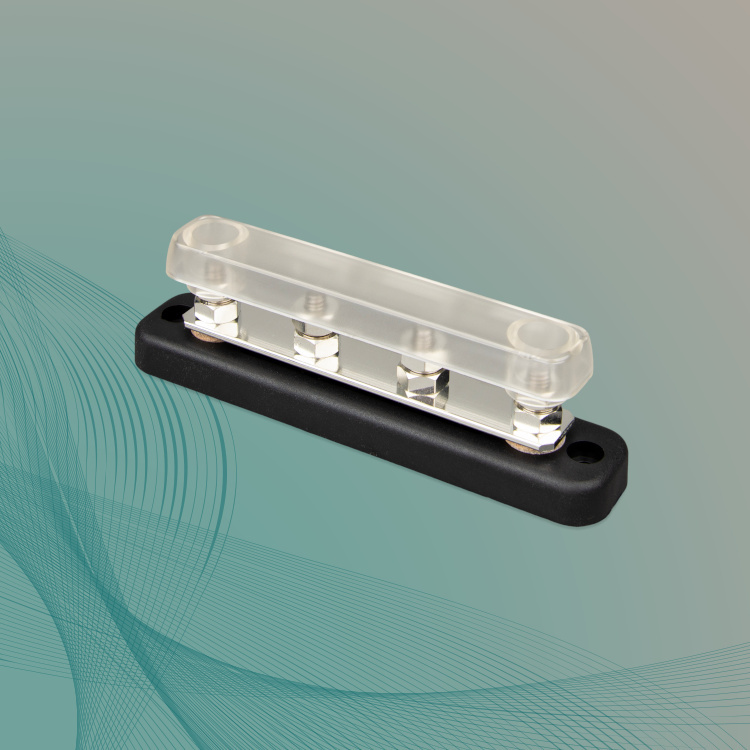Overview and construction
The Victron DC busbar 70 VDC / 150 A with 4 terminals and protective cover provides a low-resistance, high-current busbar for Victron and third-party DC systems.
This busbar features four 6.35 mm terminals (with 12.7 mm nuts) and a protective cover to prevent an accidental short circuit.
The busbar and hex nuts are made from tin-plated copper, while the terminals are stainless steel.
The plastic base uses a fire-resistant (UL 94 V-0) ABS plastic, and the protective cover is made from fire-resistant (UL 94 HB) clear polycarbonate.
Application
The job of the Victron DC busbar 70 VDC / 150 A is to provide a common positive or negative connection for DC loads such as batteries, inverter/chargers or solar charge controllers in 48V systems.
Other devices like the Cerbo GX for example, can also be connected to this busbar.
Busbar installation considerations
Victron recommends connecting inverter/chargers and solar charge controllers in an alternating manner and using adjacent terminals. The reason is that this will reduce the distance the current has to flow through the busbar, lowering resistive losses.
For correct operation, it is essential that each inverter/charger or battery receives exactly the same voltage.
To ensure this, the DC path from the battery bank to each individual inverter and vice versa must be the same.
If there is a difference between the cable thickness or the cable length between the individual devices, there will be a difference between the voltages of these units.
To achieve a balanced system, please use matching cable types with identical cross-sections and lengths for each device from the battery bank or from the busbar.
The cable lugs should also be identical, with all connections tightened to the same torque values.



.webp)
.webp)
.webp)
Remarks, reviews & ratings